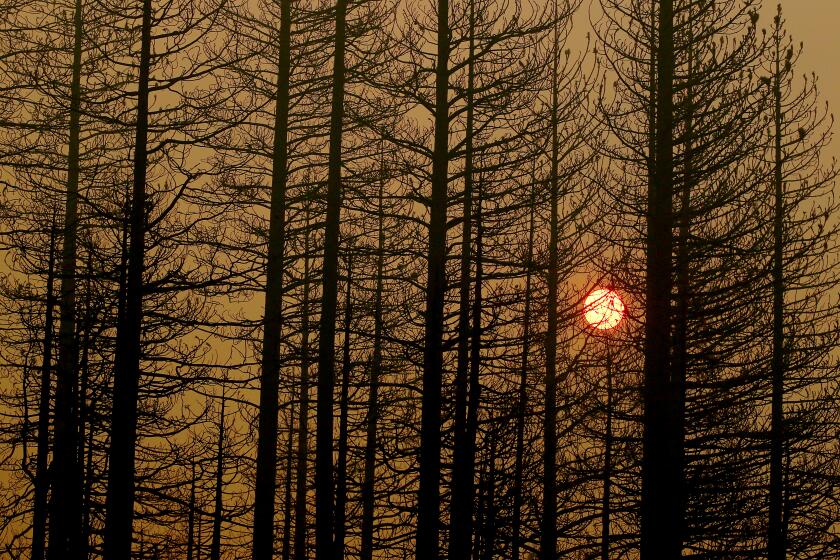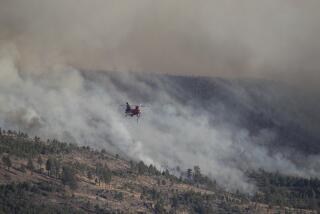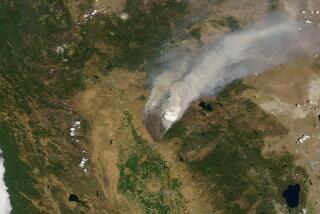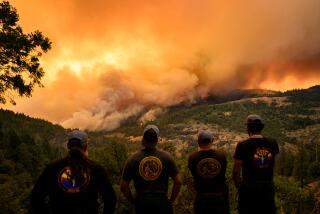KNP Complex fire threatening Sequoia National Park grows fivefold, forcing residents to flee
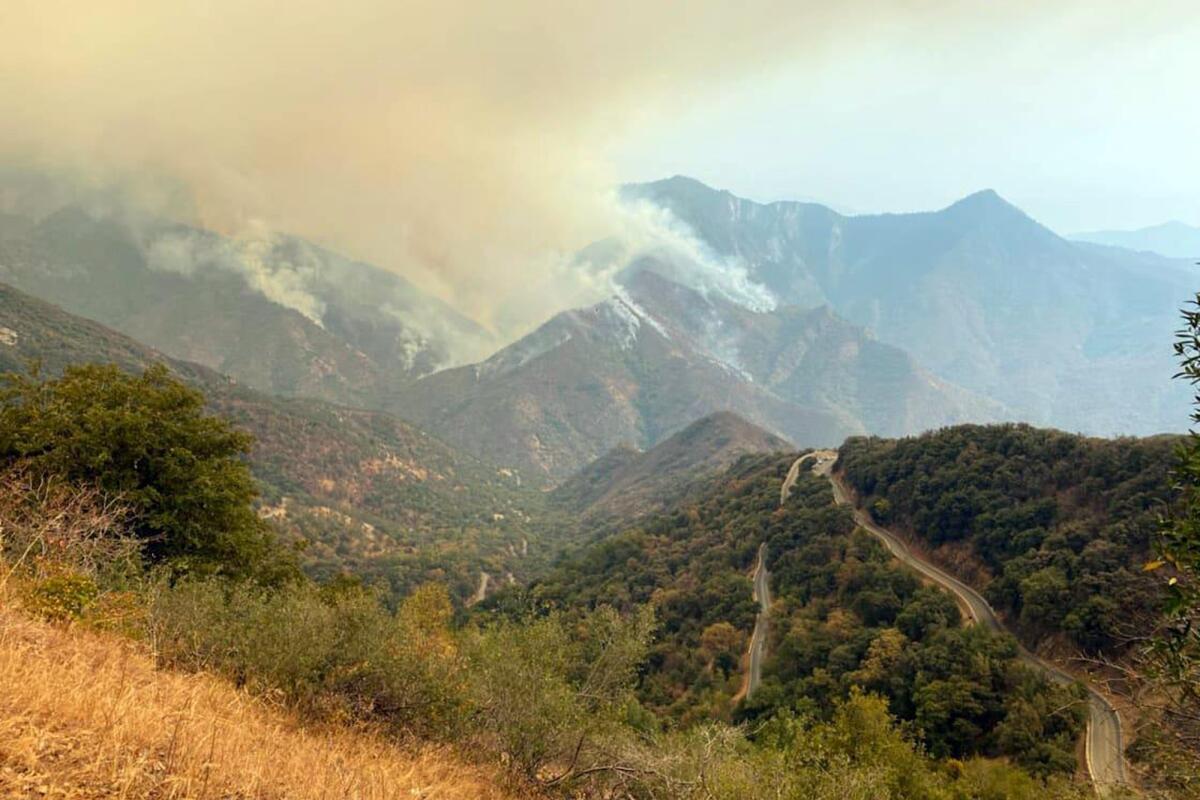
A pair of lightning-sparked fires raging in Sequoia National Park more than quintupled in 24 hours, burning ever closer to groves of the largest trees on Earth and forcing the evacuations of park employees and nearby residents.
The Paradise and Colony fires — collectively called the KNP Complex — exploded to 5,861 acres by Tuesday afternoon, a leap of more than 4,800 acres from the day prior. Flames from the blaze, which has no containment, were lapping a little bit closer to dense areas of towering giant sequoia trees, according to Mark Ruggiero, a spokesperson for the Sequoia and Kings Canyon National Parks.
An inversion layer over the fire lifted, causing it to pick up and tear through intense fuels, including drought-stricken trees further destroyed by bark beetles, and into drainage areas in the rugged terrain, said Ruggiero, who added that “the fire has intensified tremendously.”
The Paradise fire — now 4,821 acres — made a downhill run Monday night, crossing the middle fork of the Kaweah River and the Generals Highway, prompting the evacuation of employees from the Ash Mountain Headquarters Complex and nearby housing areas, including the community of Sycamore within the park, officials said.
Parts of the picturesque foothills community of Three Rivers were also under evacuation orders, the Tulare County Sheriff’s Office said in a Facebook post. The Paradise fire is burning about three to four miles east, Ruggiero said.
Evacuation orders remain in place for the Silver City and Cabin Cove area on Mineral King Road, while other areas of Three Rivers are under evacuation warnings.
There were 110 structures in the mandatory evacuation zone and 1,189 in areas under evacuation warnings, officials said at a community meeting Tuesday evening in Three Rivers.
Clay Jordan, superintendent of Sequoia and Kings Canyon National Parks, said the fires started burning in steep terrain that initially made access difficult for ground crews, so air crews “literally started painting the mountains red with retardant.”
Conditions across the West have fire behavior less predictable, Jordan said.
But residents should have faith in the coordinated efforts of the federal, state and local firefighting resources being brought into the area, he said.
Officials stressed that although Three Rivers was not under a mandatory evacuation order, residents should stay alert for updates from authorities.
Lt. Gary Marks, of the Tulare County Sheriff’s Office, said deputies planned to knock on as many doors as possible in the evacuation warning zone to collect names and telephone numbers.
“This is a beautiful community but it’s only got one way in, one way out, and that’s [State Route] 198,” Marks said.
Flames were lapping about a mile from the famed Giant Forest, the largest concentration of towering giant sequoias in the park and home to the 275-foot General Sherman tree — considered the world’s largest tree by volume, Ruggiero said.
The fires were nearer to the trees, but not yet an “imminent threat,” he said.
The fires, which began Thursday as storms rolled into the southern Sierra Nevada region, have been upgraded to a “type one” incident management category, which Ruggiero said is the highest level, bringing more resources to the blaze.
Last month, the U.S. Forest Service ordered the closure of all national forests in California through at least Sept. 17 as wildfires burned across the state. The KNP fire has forced the closure of Sequoia National Park, while the Kings Canyon side remains open.
Nearby, a separate blaze — the Windy fire, which was burning to the south in the adjoining Sequoia National Forest — had moved into a grove of the enormous trees as it continued to grow at a moderate rate.
The fire by Monday had crept into the Peyrone Sequoia grove, part of the Giant Sequoia National Monument, and on Tuesday, crews were heading out to assess potential damage, said Thanh Nguyen, a public information officer for the fire.
On Tuesday morning, the blaze, which ignited Thursday in the Tule River Indian Reservation before pushing into the forest, had seared 1,454 acres with no containment, fire officials said.
Climate warming has exposed an additional 31,400 square miles of forests to fire at higher elevations, where flames are scorching terrains that previously were too wet to burn.
The Windy fire has not spurred any evacuations or warnings, but officials were monitoring it as it burned near the communities of Camp Nelson, Ponderosa and Johnsondale, Nguyen said.
With 15 large wildfires burning across the state — including the massive Dixie fire, which has chewed through nearly 1 million acres — Nguyen said it’s been hard to get the necessary resources to fight all of the fires.
“That’s a big challenge that we’re dealing with,” he said.
Times staff writer Gregory Yee contributed to this report.
More to Read
Sign up for Essential California
The most important California stories and recommendations in your inbox every morning.
You may occasionally receive promotional content from the Los Angeles Times.

